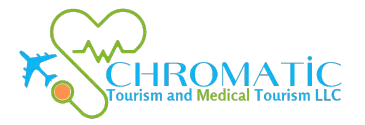Deep Brain Stimulation (DBS) in Istanbul – Advanced Treatment for Neurological Disorders
At Chromatic Medical Tourism, we specialize in connecting international patients with leading neurologists and JCI-accredited hospitals in Istanbul for Deep Brain Stimulation (DBS). This cutting-edge treatment is designed to alleviate symptoms of neurological disorders such as Parkinson’s disease, essential tremor, and dystonia. With our comprehensive support, your journey to better neurological health will be seamless, safe, and stress-free.
Why Choose Istanbul for Deep Brain Stimulation?
-
- World-Class Expertise: Our partner neurologists and neurosurgeons are leaders in their field, with extensive experience in performing DBS procedures.
- Advanced Technology: State-of-the-art facilities equipped with the latest surgical and neurostimulation tools.
- Affordable Excellence: High-quality care at a fraction of the cost compared to Western countries.
- Personalized Care: Tailored treatment plans to meet your unique needs.
What is Deep Brain Stimulation (DBS)?
Deep Brain Stimulation (DBS) is a surgical procedure that involves implanting a small device, similar to a pacemaker, to deliver electrical impulses to specific areas of the brain. These impulses help regulate abnormal brain activity, providing relief from symptoms of neurological disorders.
Conditions Treated with DBS
-
- Parkinson’s Disease: Reduces tremors, stiffness, and movement difficulties.
- Essential Tremor: Controls involuntary shaking, particularly in the hands.
- Dystonia: Alleviates muscle spasms and abnormal postures.
- Obsessive-Compulsive Disorder (OCD): Helps manage severe, treatment-resistant OCD.
- Epilepsy: Reduces the frequency and severity of seizures in some cases.
Our partner specialists use advanced techniques, including image-guided surgery and real-time brain mapping, to ensure precise placement of the DBS device.
Our Comprehensive Deep Brain Stimulation Services
At Chromatic Medical Tourism, we provide end-to-end support for patients undergoing DBS in Istanbul. Our services include:
- Pre-Treatment Support
-
- Consultations: Connect with leading neurologists and neurosurgeons for personalized treatment plans.
- Diagnostic Testing: Comprehensive evaluations, including MRI and CT scans, to determine candidacy for DBS.
- Travel Arrangements: Visa assistance, flight bookings, and comfortable transportation.
-
- During Your Stay
-
- Luxury Accommodation: Stay in comfortable, conveniently located hotels or recovery centers.
- Multilingual Support: 24/7 assistance from patient coordinators who speak your language.
- Hospital Coordination: We handle all logistics, so you can focus on your health.
-
- Post-Treatment Care
-
- Recovery Support: Assistance with medications, follow-up appointments, and rehabilitation.
- Device Programming: Ongoing adjustments to the DBS device to optimize symptom control.
- Ongoing Communication: We stay in touch to ensure your long-term well-being.
-
Why Choose Chromatic Medical Tourism for Deep Brain Stimulation?
- Expertise and Trust
-
- We partner with JCI-accredited hospitals and renowned neurologists to ensure the highest standard of care.
- Our team has years of experience facilitating medical tourism for international patients.
-
- Transparent Pricing
-
- No hidden costs or surprises – we provide clear, upfront pricing for all services.
-
- Personalized Care
-
- From pre-travel arrangements to post-discharge follow-up, we tailor our services to meet your unique needs.
-
- Seamless Experience
-
- We handle every detail, so you can focus on your health and recovery.
-
Frequently Asked Questions (FAQs)
- What are the benefits of Deep Brain Stimulation?
-
- DBS can significantly improve quality of life by reducing symptoms such as tremors, stiffness, and involuntary movements. It is particularly effective for patients who do not respond well to medication.
- Is Deep Brain Stimulation safe?
-
- Yes, when performed by experienced specialists in accredited facilities, DBS is highly safe and effective. Our partner hospitals use the latest techniques to minimize risks.
- How long is the recovery period?
-
- Most patients can return to normal activities within a few weeks, although full recovery and optimal device programming may take several months. Our team will provide detailed guidance based on your specific case.
- Can I combine my treatment with tourism in Istanbul?
-
- Absolutely! Istanbul offers a rich cultural experience, and we can arrange guided tours and leisure activities during your recovery. You can check our tourism itinerary packages here.
- How do I get started?
-
- Contact us today to schedule a consultation. Our team will guide you through every step, from medical evaluations to travel arrangements.
Contact Us Today
Take the first step toward better neurological health. Contact Chromatic Medical Tourism to learn more about Deep Brain Stimulation in Istanbul or to schedule a consultation. Our team is here to answer your questions and provide the support you need for a successful medical journey.
Let us help you regain control of your life with world-class care in Istanbul.

